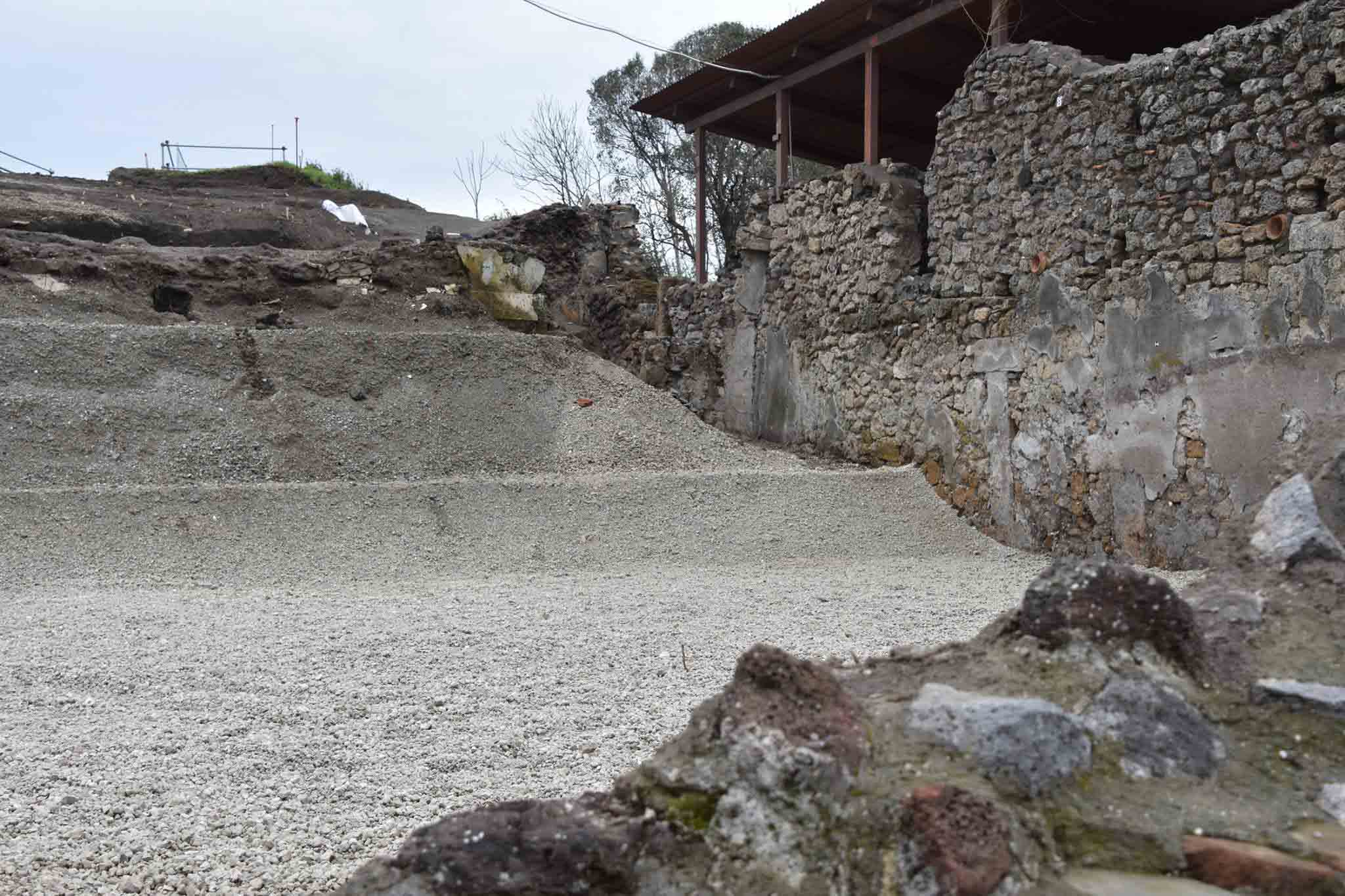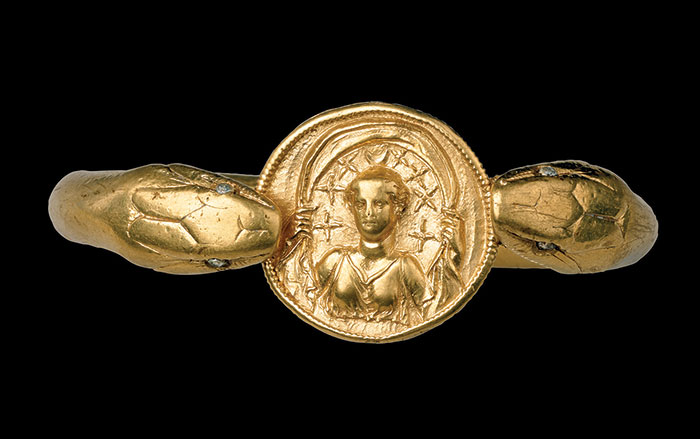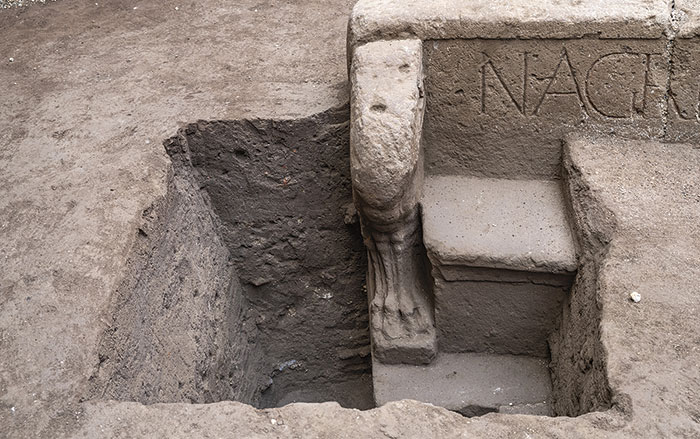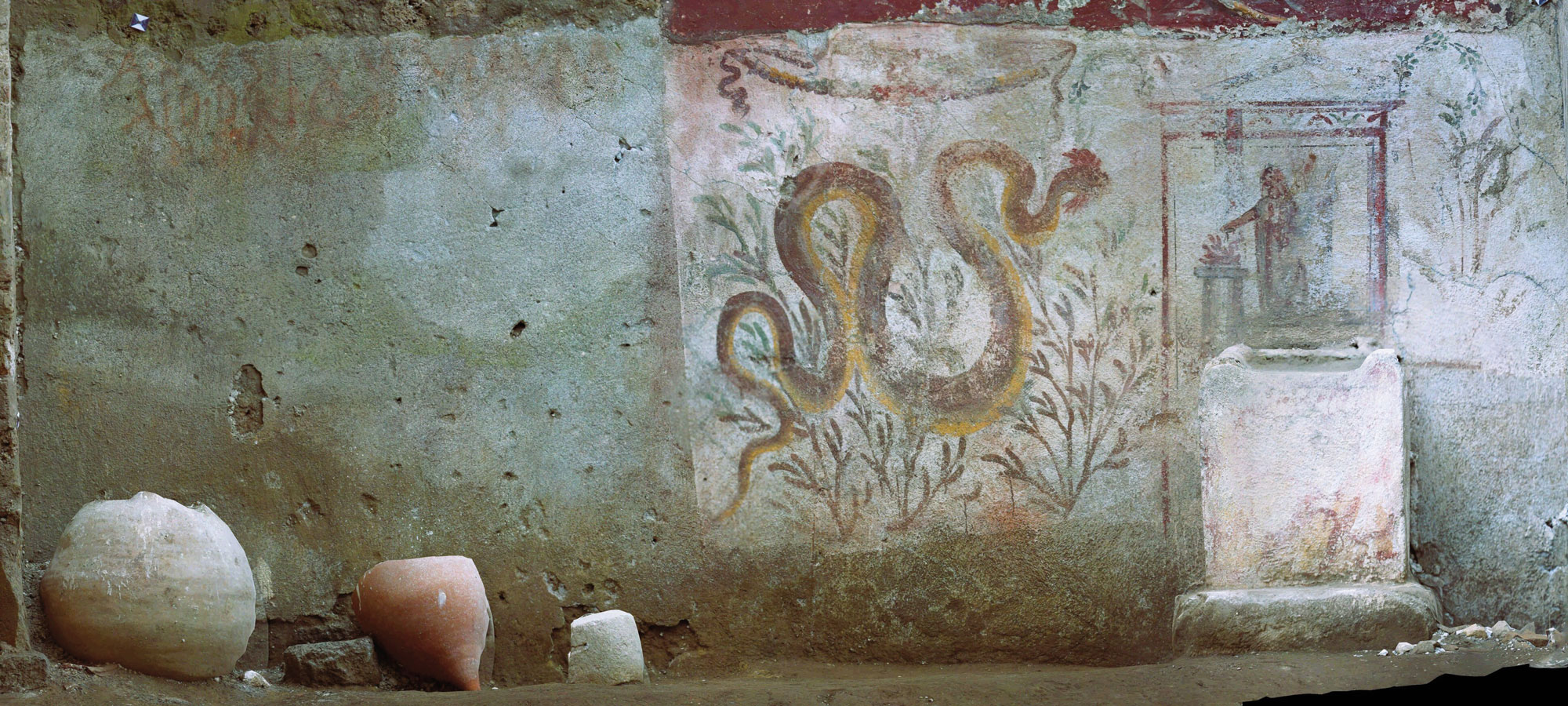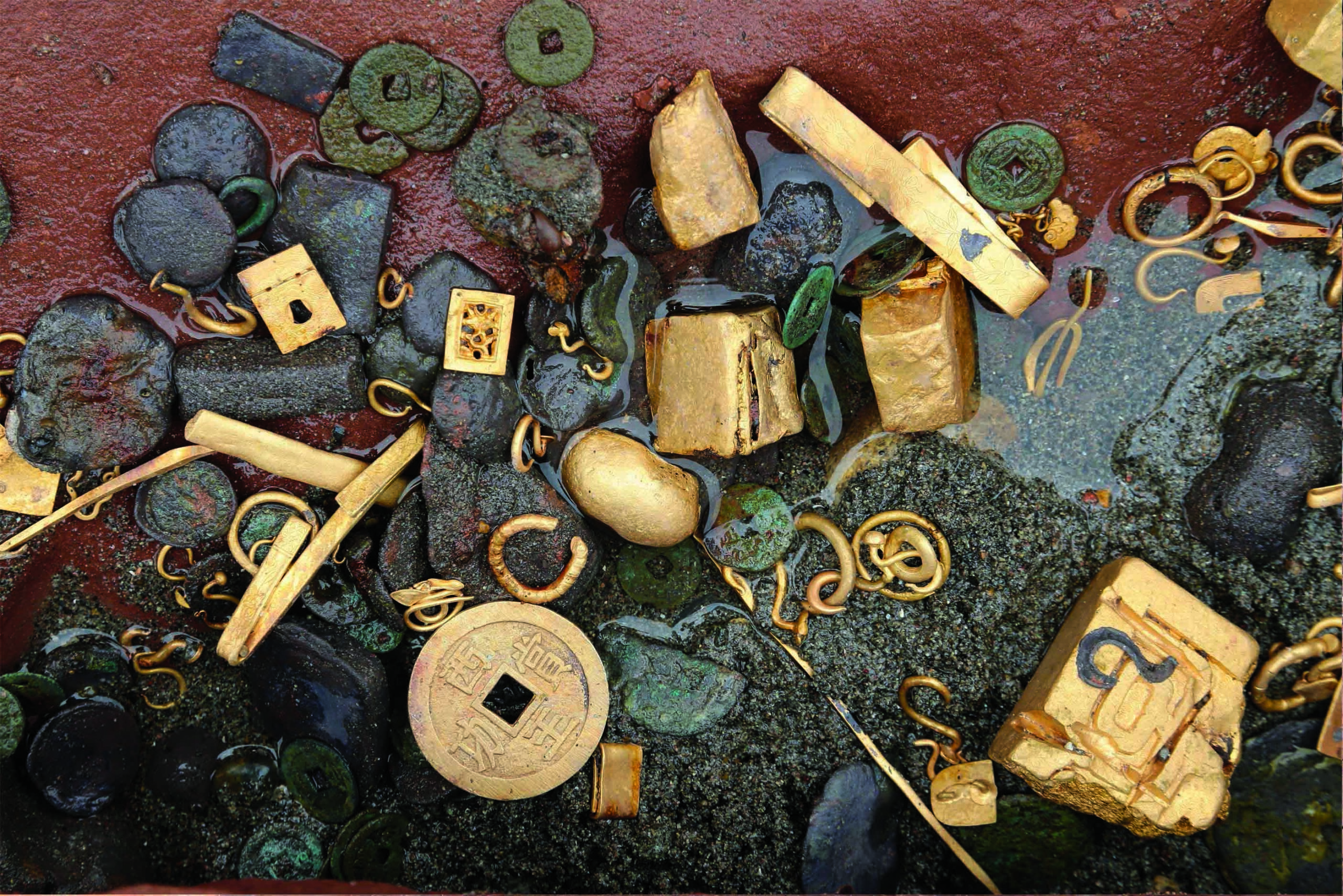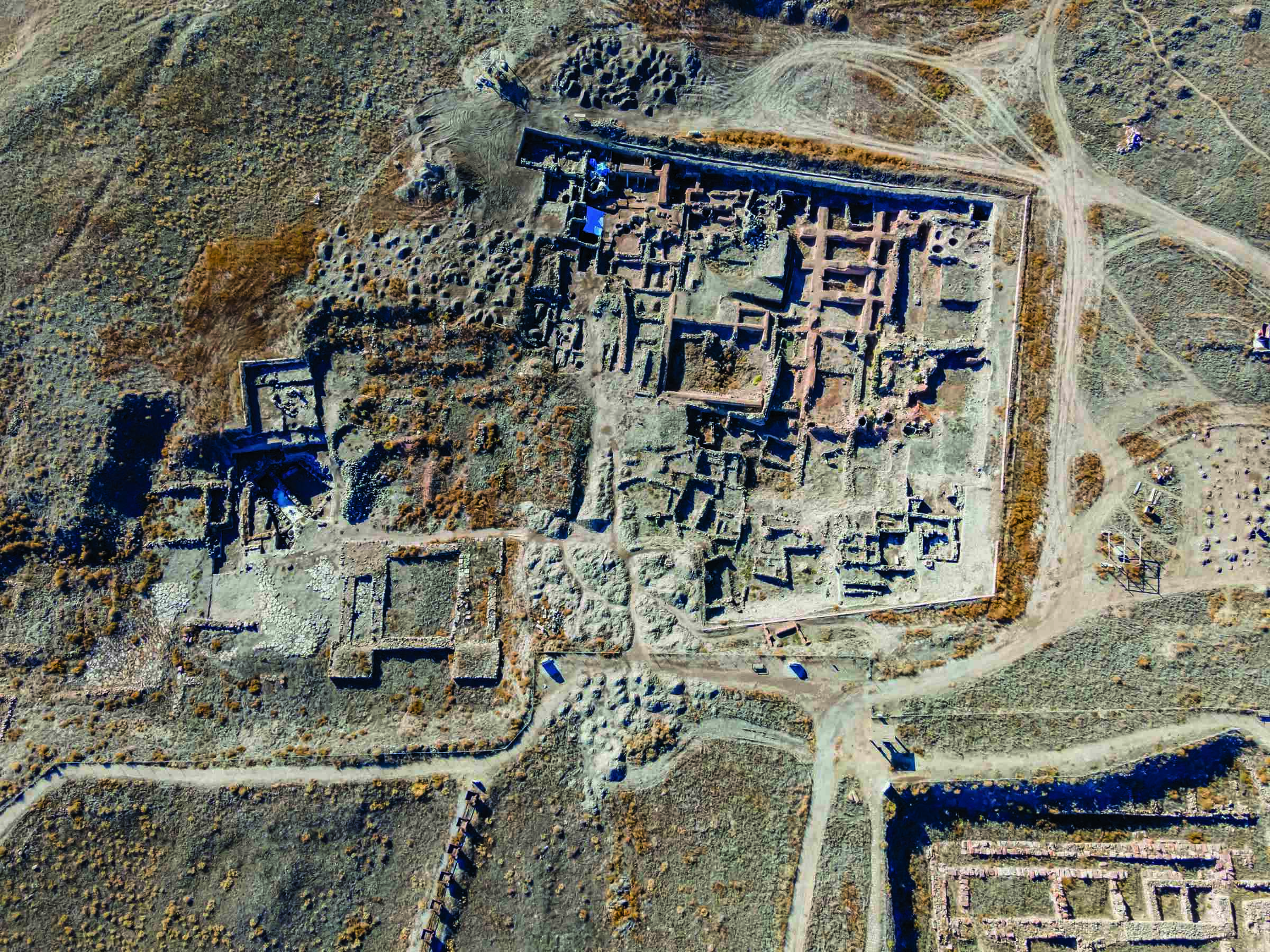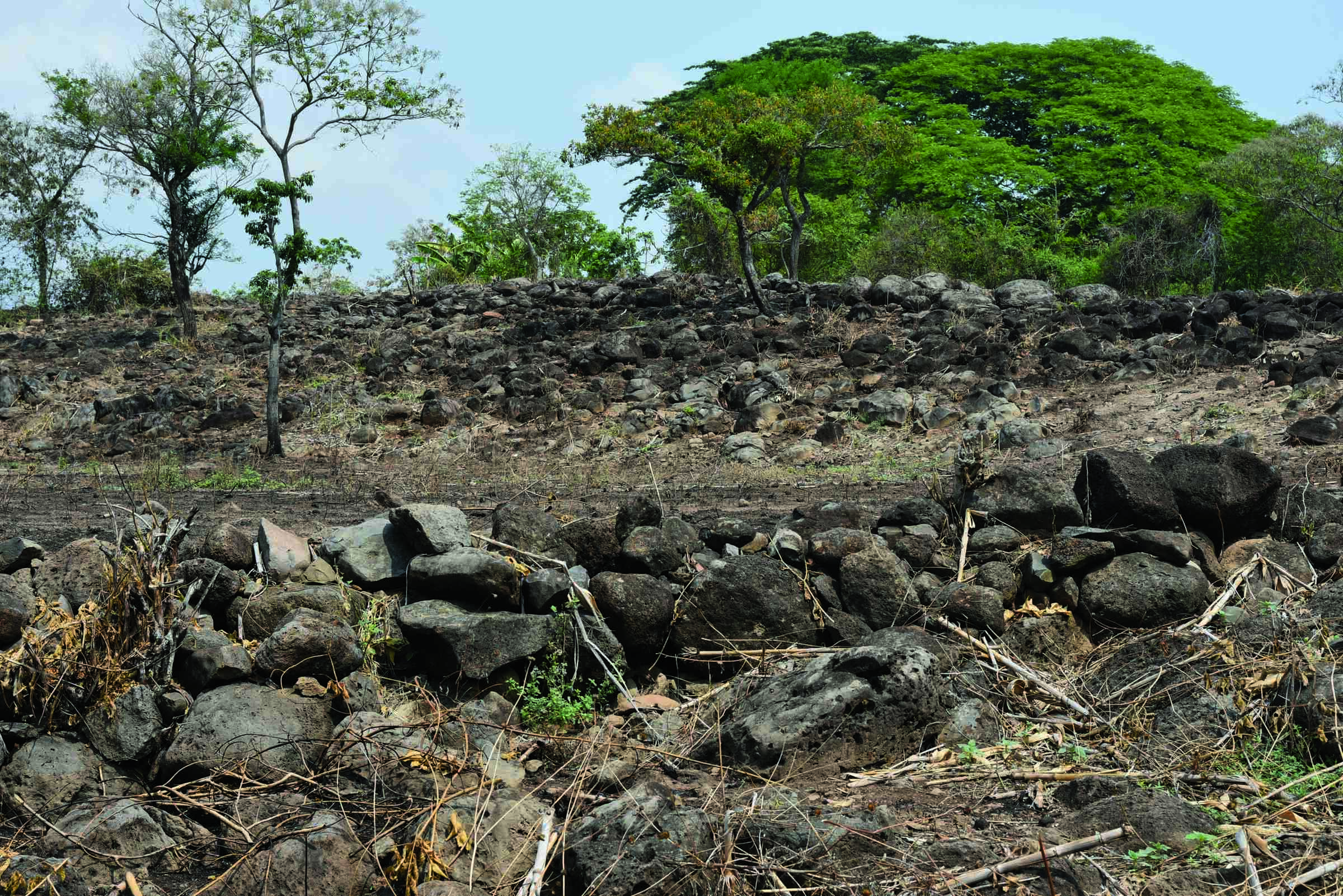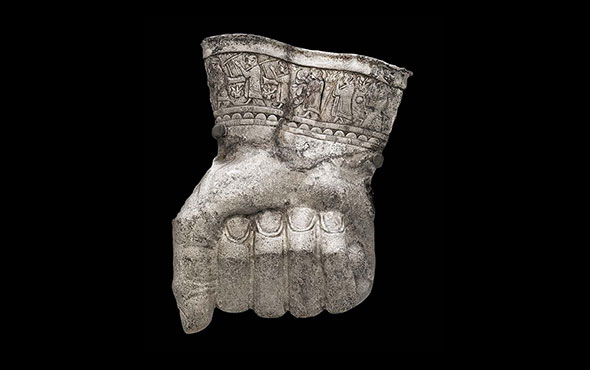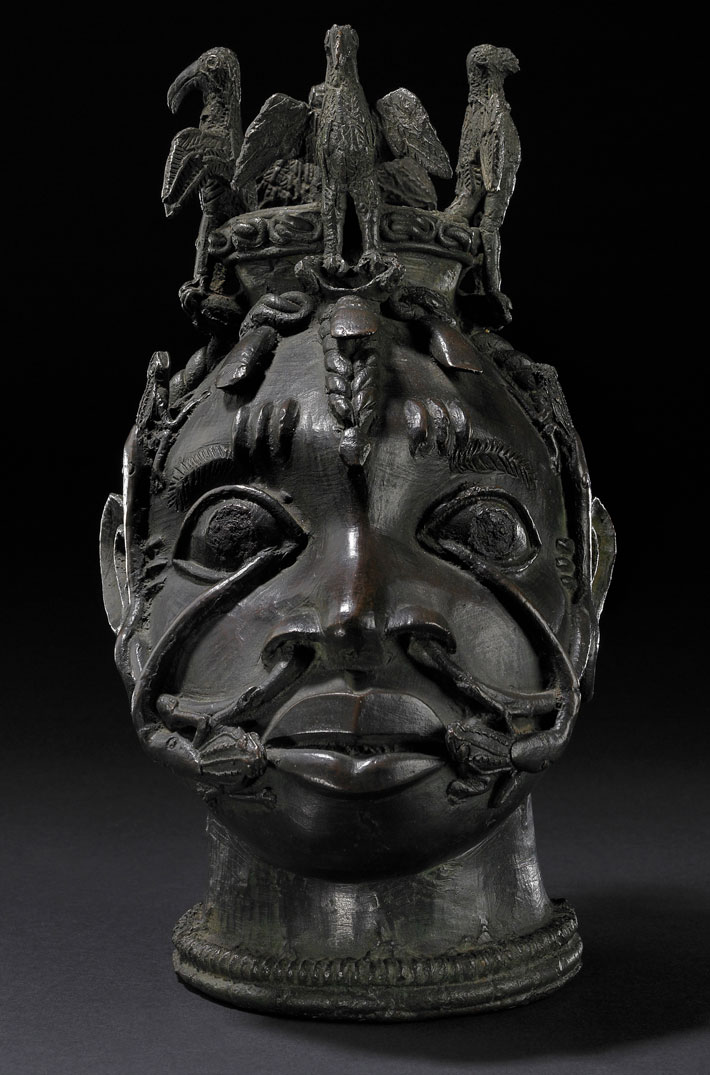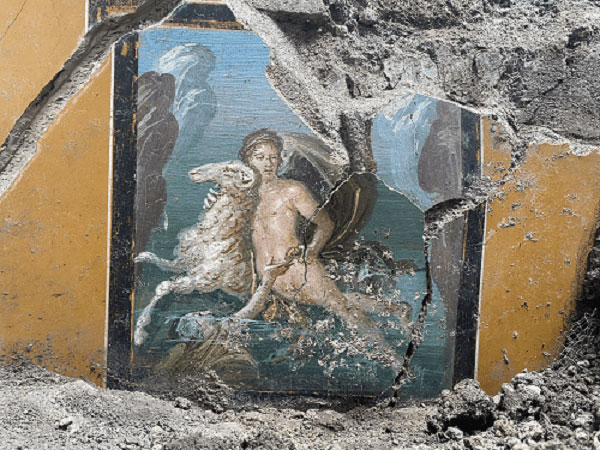
NAPLES, ITALY—According to a report in The Guardian, images of Phrixus and Helle, characters in Greek mythology, have been found at the House of Leda in Pompeii, an ancient Roman city destroyed in A.D. 79 by the eruption of Mt. Vesuvius. A depiction of the myth of Leda and the Swan was uncovered near the entrance to this house in 2018. Gabriel Zuchtriegel, director of Pompeii Archaeological Park, said that depictions of Phrixus and Helle have been found throughout Pompeii. “They are two refugees at sea, a brother and sister, forced to flee because their stepmother wants rid of them and she does so with deception and corruption,” Zuchtriegel explained. The siblings were rescued by a flying ram with golden fleece sent by their birth mother, but Helle fell off the ram into the waters of the Hellespont, and drowned, he added. The fresco shows Helle with her face obscured by waves, reaching out to Phrixus on the back of the ram. To read about new insights into the process of ancient Roman house painting, go to "Painting by Roman Numerals."


